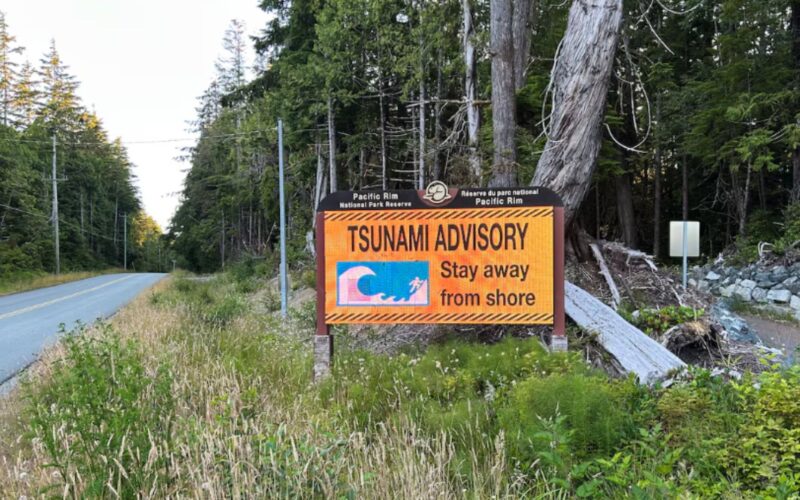British Columbia (Richa Walia): The anticipated tsunami that reached Tofino, B.C., late Tuesday turned out to be far milder than feared, rising only about 15 centimetres, roughly half the height of a school ruler. Instead of panic, the gentle waves brought relief and even curiosity to about 300 onlookers gathered at Mackenzie Beach just before midnight.
Hours earlier, J.J. Belanger, general manager of Crystal Cove Beach Resort, sprang into action after news broke of a powerful 8.8-magnitude undersea earthquake off Russia’s Kamchatka Peninsula — one of the strongest quakes ever recorded.
With several hours before any waves could reach Canada’s West Coast, Belanger closely monitored updates from the U.S. National Oceanic and Atmospheric Administration. By 6:30 p.m., while the tsunami alert was elevated, forecasts predicted waves no higher than 30 centimetres.
“We didn’t alarm our guests. No beaches were closed; we only advised people to stay above the high-tide line, and fortunately, it was low tide,” said Belanger, who also chairs the Tourism Association of British Columbia.
A successful emergency response
B.C. Premier David Eby praised the province’s preparedness, describing the response as a “textbook example” of effective coordination between provincial authorities, municipalities, and regional districts.
“It was a valuable trial run. If a major event does happen in the future, we now know our warning systems are ready to protect British Columbians,” Eby said during a press conference in Kitimat.
The earthquake also triggered small tsunami waves across Japan, Hawaii, and the U.S. West Coast. While several injuries were reported in Russia’s Kamchatka region, none were life-threatening, and no major damage has been confirmed.
In Kamchatka, ports flooded, and residents fled inland. Many were hurt while rushing to evacuate buildings.
Preparedness in practice
Belanger noted that his resort recently went through a tsunami drill just three weeks ago, when a 7.3-magnitude earthquake in Alaska prompted precautionary siren alerts. During that drill, his team evacuated the resort in just 11 minutes, well below the 15-minute window needed to reach high ground if an earthquake were to strike in the Cascadia subduction zone.
“It was excellent practice, and we were ready to do it again last night if necessary,” he said.
The science behind the waves
Katsu Goda, professor and Canada Research Chair in multi-hazard risk assessment at Western University, explained that the energy of tsunami waves often remains strong even while traveling across oceans at speeds of 800 km/h.
“When Japanese news stations began reporting smaller waves, I knew B.C. was at minimal risk,” Dr. Goda said.
However, he cautioned that such distant quakes may not reduce the long-term seismic threat to North America’s West Coast. B.C.’s coast, he noted, is historically struck by a catastrophic earthquake roughly every 500 years.
“The last major event was in 1700, confirmed by both oral histories of local First Nations and coastal soil samples showing saltwater intrusion,” Goda said.
If a similar event occurs, his research suggests that a 10-metre tsunami could devastate Tofino’s coastline, wiping out much of its high-value beachfront properties.
“It would be catastrophic,” he warned.

